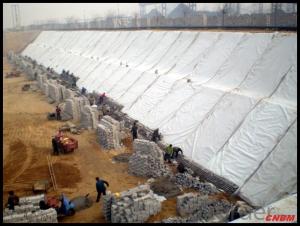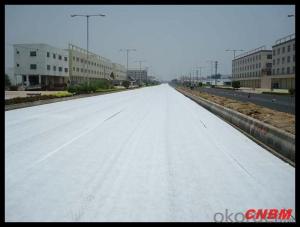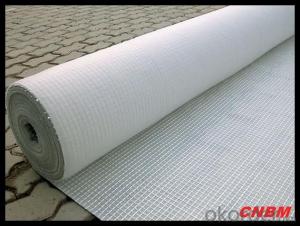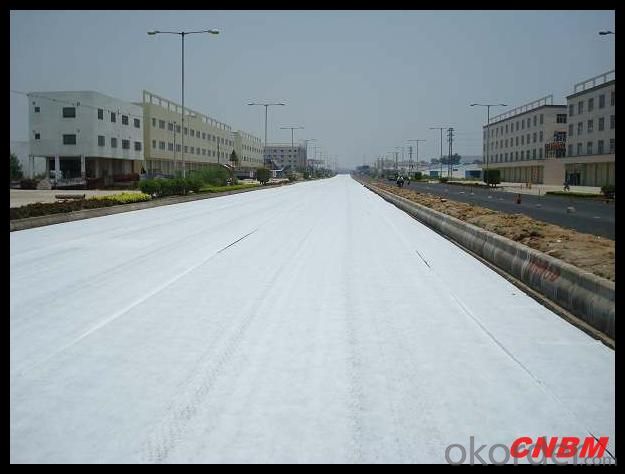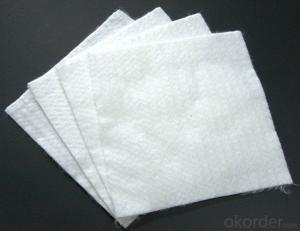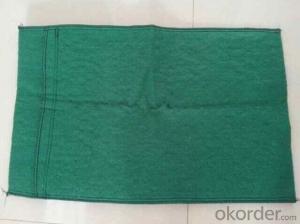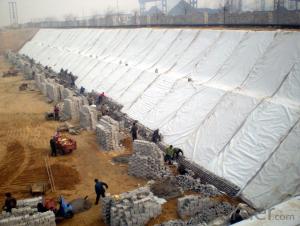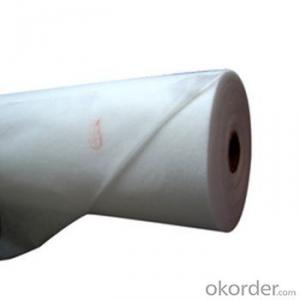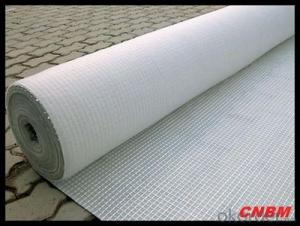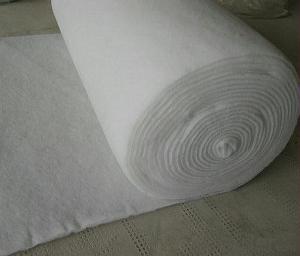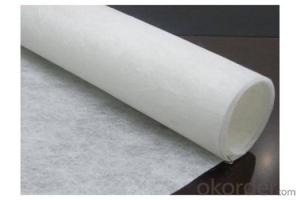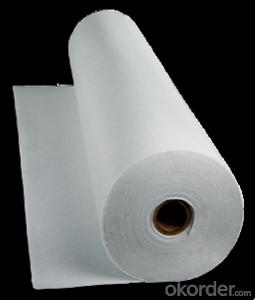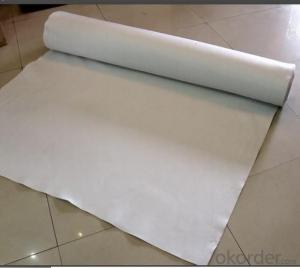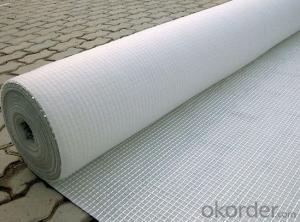Rahat Geotextile PP Woven Geotextile Fabric Price for Highway 300g/m2
- Loading Port:
- China main port
- Payment Terms:
- TT OR LC
- Min Order Qty:
- 4000 m²
- Supply Capability:
- 1000000 m²/month
OKorder Service Pledge
OKorder Financial Service
You Might Also Like
Specification
Introduction of Composite Geomembane with Nonwoven Geotextile:
It's made by non woven geotextile and PE/PVC geomembrane. Catagories are including geotextile and geomembrane, geomembrane wit non woven geotextile on both sides, non woven geotextile with geomembrane on both sides, multi-layer geotextile and geomembrane.
Specification:
1.One piece of geotextile and one piece of membrane;
Weight of base geotextile: 100-1000g/m2;
Thickness of geomembrane: 0.1-1.5mm.
2.Two piece of geotextiles and one piece of membrane;
Weight of base geotextile: 80-600g/m2
Thickness of geomembrane: 0.2-1.5mm.
3.One piece of geotextile and two pieces of membranes;
Weight of base geotextile: 100-1000g/m2;
Thickness of geomembrane: 0.1-0.8mm.
4. Multi-layers:Weight of base geotextile: 100-1000g/m2;
Thickness of geomembrane: 0.1-0.8mm.
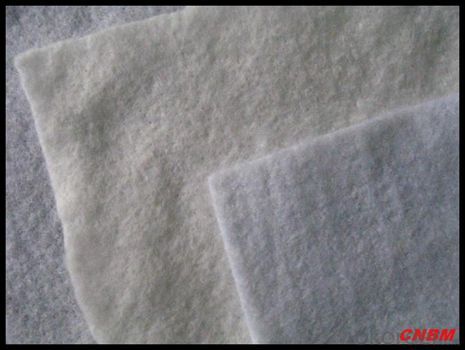
Packaging & Shipping
Packing: PLASTIC FILM INSIDE, AND WOVEN BAG OUTSIDE
Shipping: About 15 days after receipt the deposit
pecifications
geotextile fabric
permeability,filtration,easy for construction
ISO and CE certificate
Good quality and competitive price
Our Service
Quality assurance
1.On a regular basis or as per your request,we entrust national testing agencies to conduct quality inspections
2. Strictly in accordance with the ISO9001-2008 international quality system standard,we monitor and manage the whole process throughout production,quality testing,and measurement to ensure product quality
3. For quality-related construction delay or substandard construction(except for damage or losses due to customer’s responsibility or irresistible natural disasters),we have refunding,replacement,and repair services.We will respond to customers’ feedbacks on quality issues within 24 hours.
FAQ:
Q: What kind of payments does jenor support?
A: T/T, L/C, Cash are accepted.
Q: Do you charge for the samples?
A: Accordeing to our company policy, the samples are free, we only charge the freight fee. And we will return the freight fee during the next order.
Q: Can you produce according to customers' design?
A: Sure, we are professional manufacturer, OEM and ODM are both welcome.
Q: Do you have other products?
A: Yes, please check the pictures:
- Q: What is geotextile cloth?
- Geogrid, geotextile, geomembrane manufacturers, specializing in the production
- Q: Geotextile geotextile geotextile construction geotextile specific application
- Nonwovens is a major category of textiles, geotechnical construction is its use on the one hand, in this field people call it geotextile. Many types of non-woven fabrics, the specific technical indicators to be determined according to the actual species. Generally measure its raw materials, weight, moisture permeability, tear strength, bursting strong, etc., insulation, moisturizing. Scope: ⒈ water conservancy project dam and slope protection of the filter, channel isolation, anti-seepage. ⒉ road, railway, airport runway foundation isolation, filter, drainage, soil slope, retaining wall and road reinforcement, drainage. ⒊ port engineering soft foundation treatment, beach embankment, harbor wharf and breakwater reinforcement, drainage. ⒋ landfill, thermal power plant ash dam, mine tailings dam isolation, seepage control. ⒌ polyester long fiber anti-sticking acupuncture geotextile has been applied throughout the field of infrastructure construction, and gradually applied to a wider range of areas.
- Q: Introduction of filament geotextile
- Filament geotextile: filament geotextile polyester filament acupuncture non-woven geotextile, without chemical additives, nor heat treatment, is environmentally friendly building materials.
- Q: How do geotextiles affect water quality?
- Geotextiles can positively impact water quality by acting as a filtration system. They prevent soil erosion, trap sediment, and filter out pollutants from stormwater runoff, thus reducing the amount of contaminants that reach water bodies.
- Q: What are the cost implications of using geotextiles in construction projects?
- The cost implications of using geotextiles in construction projects can vary depending on various factors such as the type and quality of geotextile used, the size and complexity of the project, and the specific requirements of the site. However, in general, the use of geotextiles can lead to cost savings in construction projects. Geotextiles can reduce the need for traditional construction materials, such as aggregate and soil, by providing reinforcement, stabilization, and separation functions. This can result in reduced material costs and construction time. Additionally, geotextiles can help improve the longevity and performance of structures, reducing the need for maintenance and repair in the long run. While there may be initial costs associated with purchasing and installing geotextiles, the overall cost benefits and improved project outcomes often outweigh these expenses.
- Q: Woven geotextile is not considered a spinning geotextile
- Woven geotextile is made of textile technology is a spinning geotextile.
- Q: How are geotextiles used in construction?
- Geotextiles are used in construction to reinforce and stabilize soil, prevent erosion, and separate different layers of soil or aggregate materials. They are commonly used in road construction, landfills, retaining walls, and drainage systems to enhance the overall durability and performance of the structures.
- Q: What is the effect of highway geotextile on highway construction?
- Highway geotextile is a new type of civilized artifacts in the construction of the time, laying highway geotextile can improve the carrying capacity of the road, can improve the use of the road in the process of structural damage. As the geotextile has the role of shock absorption, and has a high elasticity and resistance to deformation, so you can make the road to bear the load and stress more uniform. In the project using Hongxiang new geotextile can also improve the rigidity of the road, help to reduce road cracks.
- Q: Garage roof covered with non-woven or geotextile cloth
- Garage roof, are used geotextile, Huazhi geotextile material manufacturers
- Q: Can geotextiles be used in green or sustainable building practices?
- Yes, geotextiles can be used in green or sustainable building practices. Geotextiles can serve multiple purposes, such as erosion control, soil stabilization, and water drainage, which align with the principles of green and sustainable building. By using geotextiles, builders can reduce the need for chemical erosion control methods, minimize soil disturbance, and conserve water resources, making it an environmentally friendly choice for construction projects.
Send your message to us
Rahat Geotextile PP Woven Geotextile Fabric Price for Highway 300g/m2
- Loading Port:
- China main port
- Payment Terms:
- TT OR LC
- Min Order Qty:
- 4000 m²
- Supply Capability:
- 1000000 m²/month
OKorder Service Pledge
OKorder Financial Service
Similar products
Hot products
Hot Searches
Related keywords
